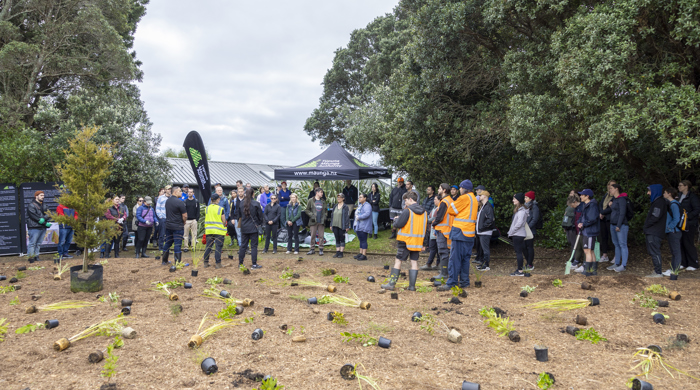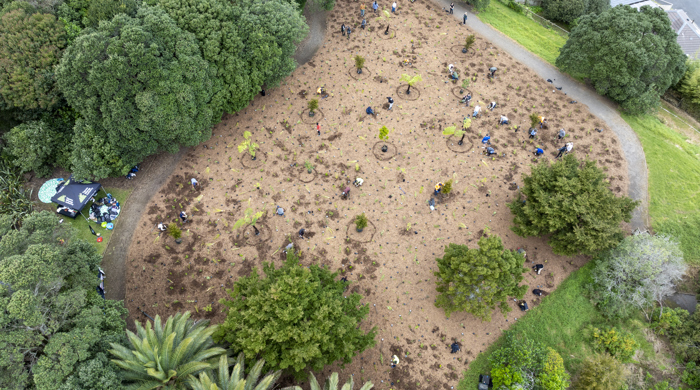Tūpuna Maunga Authority
Learn about the history of the Tūpuna Maunga Authority, its role and work to protect and restore the precious maunga of the region.
Maunga tū, maunga ora,
Maunga ora Tāmaki ora
If the maunga are well,
Tāmaki Makaurau is well
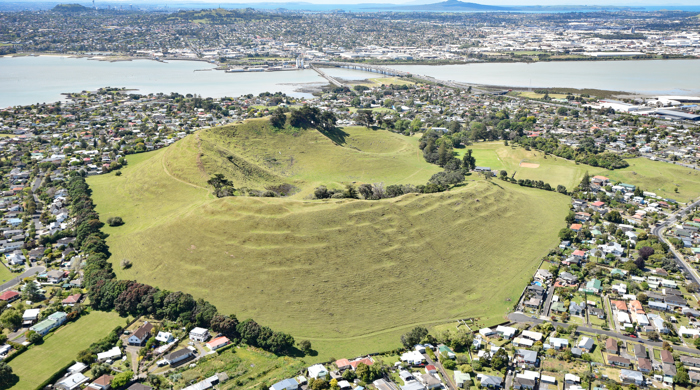
Introduction
The Tūpuna Maunga of Tāmaki Makaurau hold deep spiritual, cultural, and historical significance for the 13 iwi and hapū of Ngā Mana Whenua o Tāmaki Makaurau. These iconic volcanic cones shape the identity of Auckland, standing as reminders of the enduring connection between people and whenua.
The Tūpuna Maunga Authority ensures that this connection is honoured and protected, weaving together mana whenua world views, cultural values and public access for all communities.
A new era of co-governance and care
In 2014, the Ngā Mana Whenua o Tāmaki Makaurau Collective Redress Deed vested ownership of 14 maunga to mana whenua, marking a new era in the care and protection of these treasured places. The Tūpuna Maunga Authority was established as the statutory entity to govern the maunga, reflecting an enduring partnership between Ngā Mana Whenua and Auckland Council.
The Authority is responsible for decision-making, management and protection of these sacred landscapes, ensuring their restoration and cultural revitalisation. It is composed of:
• Six representatives from Ngā Mana Whenua o Tāmaki Makaurau
• Six members appointed by Auckland Council.
While the Authority is independent from Auckland Council, it works closely with the council and wider community to safeguard the maunga for future generations.
The Tūpuna Maunga Authority Plan
The maunga are central to Auckland’s identity, offering places for reflection, recreation, and reconnection with nature. While they remain open to the public, their protection is a shared responsibility. Through careful management, restoration projects, and public education, the maunga are being restored to their natural beauty.
The Integrated Management Plan is the set of plans and policies that guide how the Tūpuna Maunga are valued, protected, restored, enhanced and managed.
Tūpuna Maunga
The following are Tūpuna Maunga the Authority manage:
- Maungakiekie / One Tree Hill
- Maungawhau / Mount Eden
- Maungauika / North Head
- Takarunga / Mount Victoria
- Te Pane o Mataoho / Te Ara Pueru / Māngere Mountain
- Pukewīwī / Puketāpapa / Mount Roskill
- Maungarei / Mount Wellington
- Ōtāhuhu / Mount Richmond
- Te Tātua a Riukiuta / Big King
- Ōwairaka / Te Ahi-kā-a-Rakataura / Mount Albert
- Ōhinerau / Mount Hobson
- Te Kōpuke / Tītīkōpuke / Mount St John
- Ōhuiarangi / Pigeon Mountain
- Rarotonga / Mount Smart
- Matukutūruru / Wiri Mountain
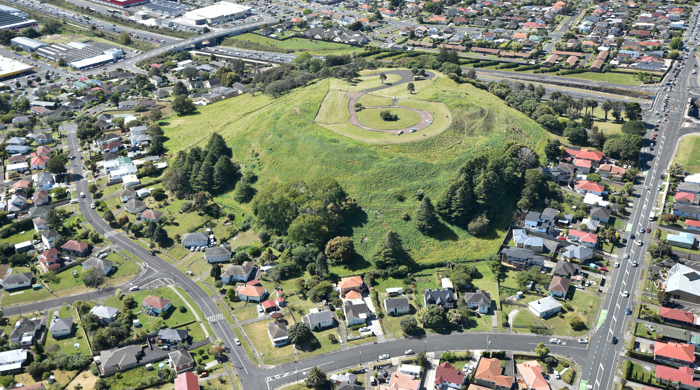

Auckland Council and mana whenua in partnership
Auckland Council is responsible for the routine maintenance of Tūpuna Maunga and administered lands under the direction of the Authority.
Council’s 21 local boards make decisions on local matters, provide local leadership and funding to support strong communities. Eight local boards have areas that encompass Tūpuna Maunga. The six council representatives on the Tūpuna Maunga Authority are councillors from the following local boards:
- Albert-Eden-Puketāpapa
- Devonport-Takapuna
- Māngere-Ōtāhuhu
- Maungakiekie-Tāmaki
- Whau
- Waitākere
Council also provides the Tūpuna Maunga Authority with the administrative support necessary to carry out its responsibility and functions.
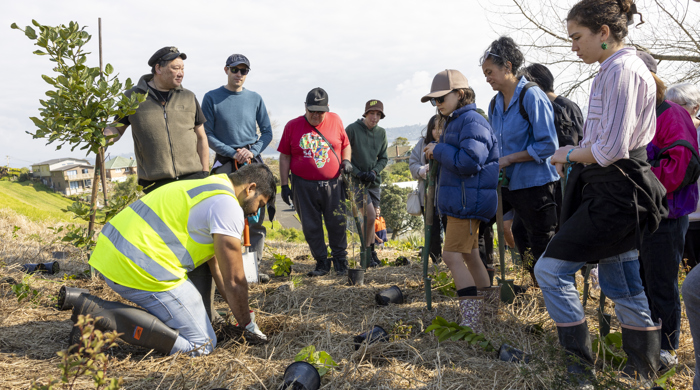
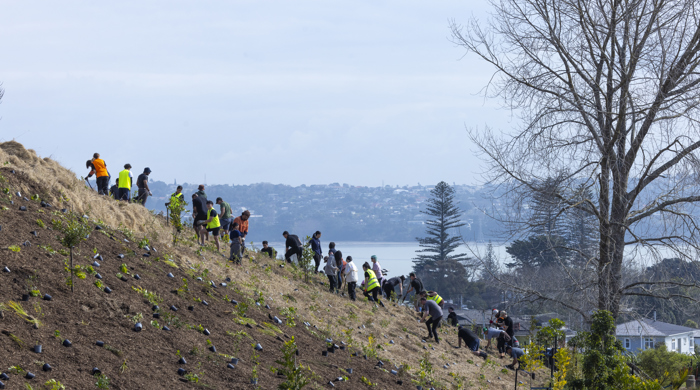
The Authority ensures that mana whenua world views, priorities and strong living connections, along with continued public access that all communities, are woven into their long-term care.
Tūpuna Maunga are at the heart of Auckland's identity and represent a celebration of our Māori identity as the city's point of difference in the world.
To deliver on mana whenua and community aspirations, mana whenua advocated for the preparation and implementation of integrated strategies and guidelines that cover pest management/biosecurity, biodiversity, education, communication, signage, recreation and design.
The six iwi mana whenua representatives on the Tūpuna Maunga Authority are made up of two representatives from each of the following rōpu:
- Marutūāhu Rōpū
-
- Ngāti Maru
- Ngāti Pāoa
- Ngāti Tamaterā
- Ngāti Whanaunga
- Te Patukirikiri
- Ngāti Whātua Rōpū
-
- Ngāti Whātua o Kaipara
- Ngāti Whātua Ōrākei
- Te Rūnanga o Ngāti Whātua
- Waiohua Tāmaki Rōpū
-
- Ngāi Tai ki Tāmaki
- Ngāti Tamaoho
- Ngāti Te Ata
- Te Ākitai Waiohua
- Te Kawerau ā Maki
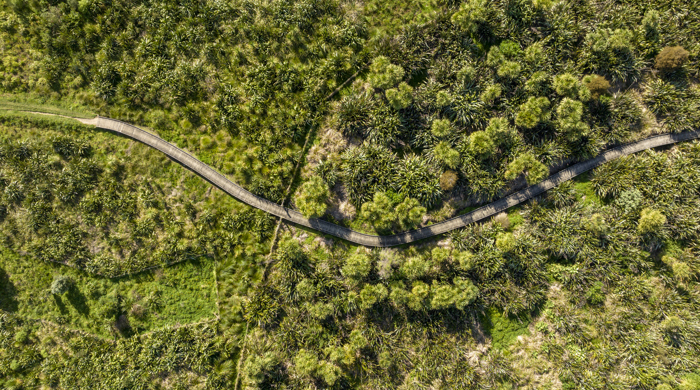
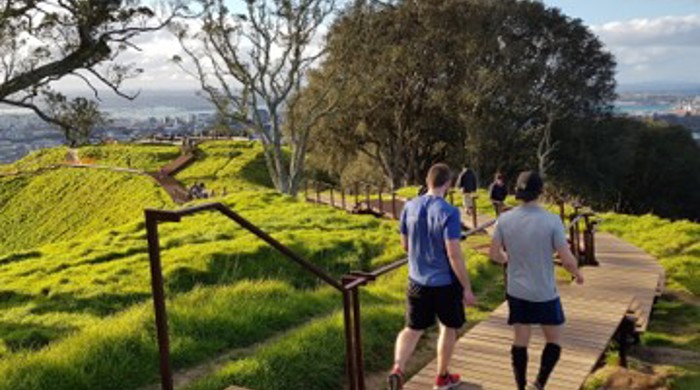
Tūpuna Maunga are taonga tuku iho passed down through the generations. The protection and restoration of the mauri of the Tūpuna Maunga is essential for mana whenua to be able to exercise kaitiakitanga.
There is also an opportunity to restore the ecological links between maunga, so they are healthy and have integrity. From a mātauranga Māori perspective, the mauri of the Tūpuna Maunga and the mauri of the people of Tāmaki Makaurau are interdependent. Replanting native habitats and reintroducing or attracting our native birds and wildlife contributes to a resilient, healthy and diverse environment, and people.
Mana whenua recognise that Tūpuna Maunga are revitalising and nourishing places that inspire connection, identity and affinity towards them. As kaitiaki, mana whenua envisage the Tūpuna Maunga as places for all cultures to come together and unite under their leadership and to share aspirations for the restoration of these taonga tuku iho. This encourages all people of Tāmaki Makaurau to want to safeguard the mauri of Tūpuna Maunga for their benefit and that of future generations.
Mana whenua respect the visual connection and sense of place people derive from the Tūpuna Maunga by maintaining and promoting significant views to the maunga from across Tāmaki Makaurau. This will emphasise the natural and cultural landscapes and routes which connect to and between each Tūpuna Maunga.
Mana whenua seek to improve the awareness of the natural, cultural, geological features and history of Tūpuna Maunga so the stories of people and maunga can be known. The use of a variety of mediums, including technology and interactive experiences, help to avoid visual clutter and reduce the need for physical visits.
One priority is encouraging low-impact and passive recreation and play, inspired by the topography and ecology of the landscape. Pedestrian and public access is prioritised on maunga, supporting restoration and protection. New and well-maintained paths and boardwalks prevent disturbance of the natural environment. Where appropriate, natural surfaces are preferred, allowing the rain to enter the ground as it would naturally.
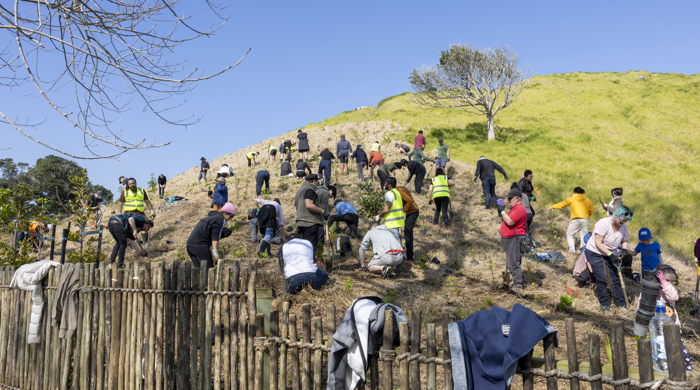
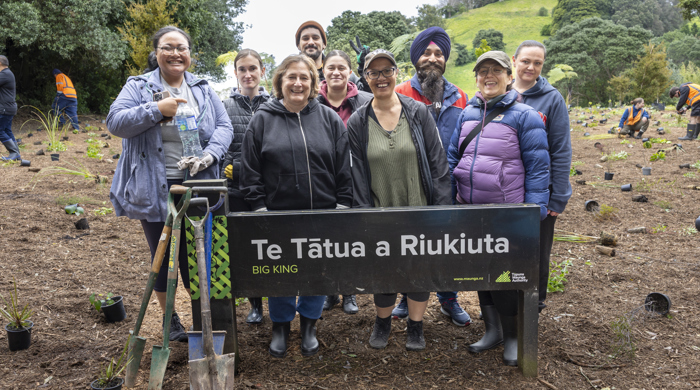
Restoring pūriri forests on Tūpuna Maunga
Pūriri forests once thrived on the volcanic soils, riverbanks and marine terraces of Tāmaki Makaurau. The pūriri forest ecosystem (WF7) supports a diverse range of native plants and animals, providing food and shelter for species like kererū, tūī, pīwakawaka, ruru and kōtare. However, urbanisation, infrastructure and quarrying have left these forests critically endangered, with only scattered remnants remaining.
Since 2018, the Tūpuna Maunga Authority has led a major restoration programme to bring these ecosystems back to the Tūpuna Maunga. To date over 180,000 native plants have been planted across the network, with a focus on species that support both biodiversity and cultural practices. This effort aims to create resilient ecosystems and reconnect people with the natural and cultural heritage of the maunga.
Protecting these restored forests involves more than just planting trees. The Authority also manages threats such as pest animals and invasive plants, which compete with native species. Ecological ‘halos’ have been established with buffer zones that help prevent reinvasion by predators and pest plants. The potential is for predator-free areas to support the return of native species such as geckos, kākā and pekapeka which make their homes in the cavities of mature pūriri trees.
Mana whenua play a key role in this restoration work, ensuring it aligns with Māori values and traditions. The programme includes planting species like rongoā to help restore cultural practices. The Tūpuna Maunga hold deep historical and spiritual significance, and bringing back pūriri forests strengthens the connection between the land, the people and traditional knowledge.
Community involvement is essential to the success of this project. The Authority hosts planting days, working with schools, universities and volunteers to help restore the maunga. By participating, volunteers not only support the environment but also build a lasting connection to these landscapes.
Visit the Tūpuna Maunga Authority website for further information.
